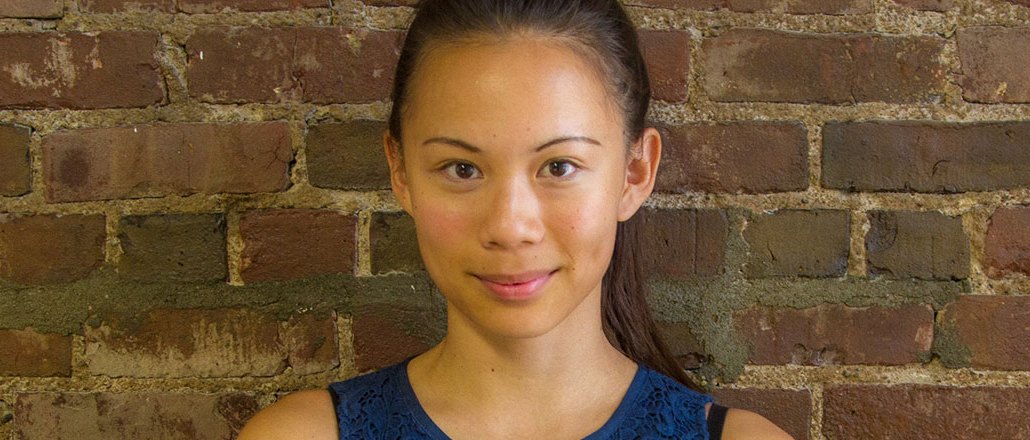
As the head of social media at The Economist, Denise Law needed to make one thing clear to the august publication’s writers: She’s not just tweeting.
“I would go into the lift and somebody would say, ‘Hey, Denise, how’s it been tweeting?’ as though that’s the only thing I do,” the community editor laughed.
Law, a Toronto native, arrived at The Economist a year ago, after five years working for the Financial Times in London and Hong Kong. Her job is to increase paid readership and awareness of The Economist through Facebook, Twitter, Instagram and Line, among other social platforms. She heads up a team of 10 in London, the U.S and Hong Kong.
One of Law’s main focuses is to build brand awareness in the U.S., which is The Economist’s biggest market for circulation (837,137 copies, per ABC report) and accounts for half of its online audience. Law said the Economist is planning a big push into the U.S during the presidential elections, where its deputy community editor, Adam Smith, will be planted in the D.C. office for seven weeks to help drive election coverage on social platforms.
Here’s what a day in Law’s life looked like during a trip to New York this week.
5:55 a.m.: A combination of jetlag and FOMO prompts me to wake up and check my emails. I now understand what it feels like to work in the U.S. offices of a London-based company: my inbox has already been flooded with emails from our social media team in London and Hong Kong.
6:30 a.m.: After clearing my inbox, I begin to extensively research bagel shops on Google. It turns out that Chelsea Bagel Tudor is a two-minute walk from my hotel, so I quickly get dressed and dash out in search of New York’s finest bagels. While I’m enjoying my bagel — a real treat coming from London — I’m looking at my social team’s Slack channel to get a sense of what projects they’re working on.
7:30 a.m.: I arrive at our offices to prepare for two town-hall presentations on our social media and digital products strategy.
8:30 a.m.: Along with one our product managers and the svp of channel development, we give an update via a webinar to staff in Europe and Asia, followed by an in-person presentation to the New York office. A big part of this trip is about spreading some awareness and enthusiasm for our social media initiatives. We are based in London and New York but also have colleagues around the globe. Communication and sharing of ideas and successes is critical.
10:30 a.m.: I jump on a quick call with my colleague Adam Smith — yes, that’s his real name — who’s based in London and works on our social media team. He updates me on our plans for Medium, where we’ve recently started posting some of our U.S. elections coverage.
11 a.m.: I spend the next couple of hours in a meeting with other international publishers to share insights on how social media and distributed networks are shaping the future of journalism — in addition to listening to our audience through comments and data. This is a way for us to stay current on trends and share best practices with the media community. After all, we’re all about building community.
1:00 p.m.: One of my London-based colleagues recommends Urban Space for lunch. (Funny that recommendation would come out of London!) I bring along with me our head of new product development to sate my appetite for New York food halls and catch up on some of the products he’s working on. I eat a sushi burrito for the first time in my life and return to our offices feeling quite satisfied. (Food has been a defining part of this NY trip as I’ve come to appreciate what a foodie town this is.) We then exchange our thoughts on chatbots and the chatbot bootcamp that we’ve been running all summer to see if this is an area that we should explore. I tell him about our recent social media hackathon in London and we talk about the feasibility of piloting one of the winning ideas. Secret for now!
2:00 p.m.: This time is devoted to back-to-back meetings with various U.S.-based staff taking the opportunity to meet face to face instead of via Google Hangouts, which is how we conduct many meetings here at The Economist.
4:00 p.m.: I meet up with our product manager, who oversees some of our apps and gets all the back-end technology sorted, and our svp of channel development, both of whom are responsible for building relationships with distribution partners and social media platforms such as Facebook and Apple News. We spend the next couple of hours swapping plans and agreeing on a roadmap for the rest of the year and early 2017. I serve as the editorial liaison for these two, and so it’s important that we are working in sync to ensure that our journalism is getting the best treatment on all platforms.
6:00 p.m.: I grab dinner with an editorial colleague, and it’s one of the most memorable dinners: fried chicken and waffles.
9:00 p.m: Oh jetlag! I’m exhausted and hit the hay. After a day of meetings, presentations and delicious food, I fall.
More in Media

WTF is behind the explosion of faceless creators?
Brands are rapidly increasing their spending on faceless creators, showing the unique benefits of working with this type of influencer.

In Graphic Detail: As ‘Grow a Garden’ booms, a new report shows the marketing power of Roblox
The explosive growth of “Grow a Garden” has brought new attention to Roblox — and rejuvenated marketers’ interest in its advertising power.

Brand deals surge for golf creators as the sport’s popularity spikes
Golf is booming, and so is influencer marketing. As a result, golf creators are signing an unprecedented number of brand deals in 2025.





